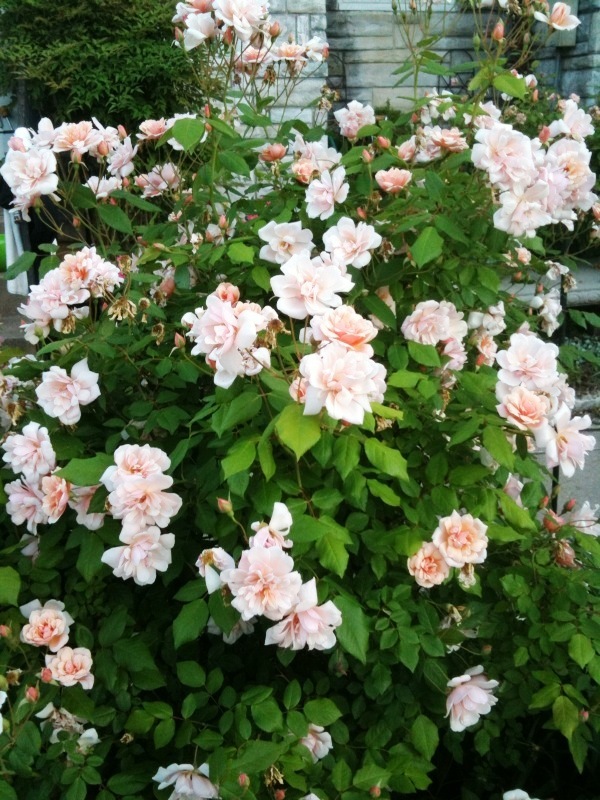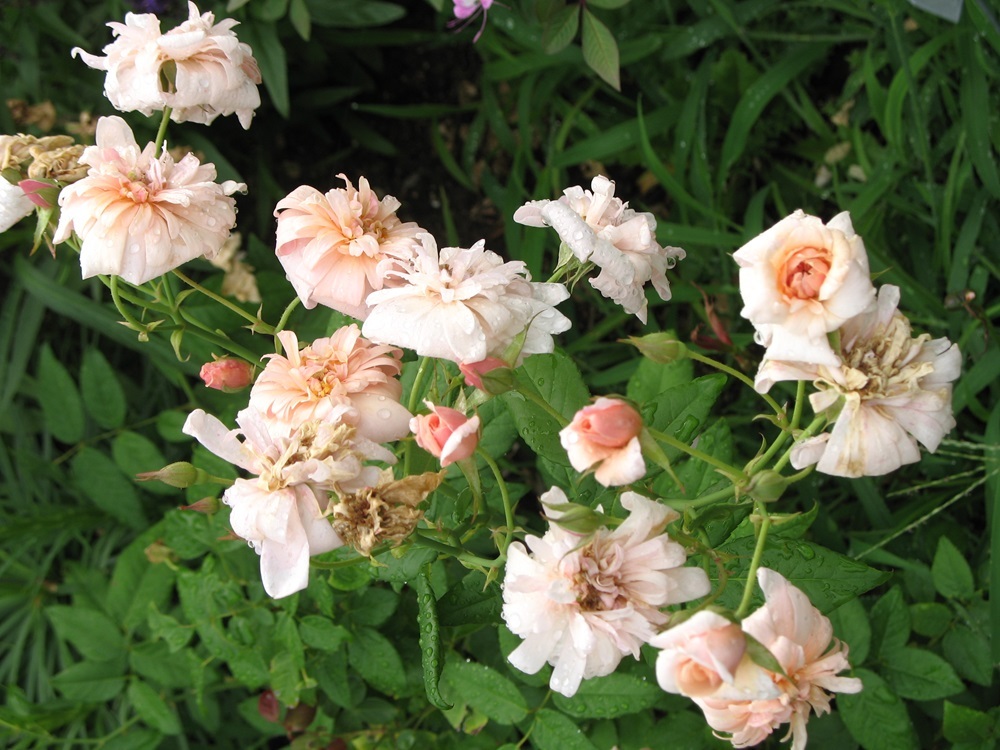A Rose to Fill Your Garden or Home with Fragrance
September 19, 2024
Rose 'Perle d'Or' Packs a Powerful Scent
I'm often asked which is my favorite rose variety or cultivar. It's impossible for me to pick just one, but if you know me you know I have a penchant for peach, apricot, and orange colored roses. Now, Rose 'Perle d'Or' (which translates to pearl of gold) doesn't really fall into this color category, BUT it gets close with a peachy pink bloom.
But many modern hybrid roses can be finicky and disease prone, or can't stand up to really hot dry climates. Not to mention, many have lost their fragrance through the breeding process....this is not the case with 'Perle d'Or'.
Not only is 'Perle d'Or' an incredibly tough Polyantha rose introduced in 1884- which requires little to no special care to perform admirably - it's also classified as a Texas Earth-Kind rose. And it's powerful fragrance will send you swooning!

Rose 'Perle d'Or' blooms emerge with peachy/apricot colored buds and blooms, maturing to a pale pink with apricot center.
PC: Leslie F. Halleck
Looking for a Rose to Sent your Entire Garden or Home?
Well, you've found it! 'Perle d'Or' plants may produce what seem like smaller flowers, but come mid-morning when the sun is out and temperatures have warmed, one plant can fill your garden with fragrance. Cut some of these bloom clusters for a vase indoors and your entire space will be scented with a classic old-fashioned rose fragrance.

How to Grow Rose 'Perle d'Or'
This tough heat- and drought-tolerant shrubby rose will grow 4-5 ft tall (usually gets to 5 feet for me in my long growing season). When planning for space, plant 'Perle d'Or' 6-feet on center.
Plants are cold hardy in USDA Zones 6-9. Unlike many less-heat tolerant roses, this rose prefers to be kept on the dryer side once fully established, so don't place it where there will be a lot of supplemental irrigation. Plants are very drought tolerant once established.
As with any rose, it needs a full sun location (at least 6 hour a day, more is better!). While plants are highly tolerant of typical rose diseases such as black spot, powdery mildew, or botrytis - and you really won't see a lot of this on these plants - good air circulation and keeping irrigation water off the foliage is always best practice.
Sure, you can follow the same rose pruning practices for this plant, but it's not required to get a bounty of blooms. If you need to reduce it's size, you can prune 30-50% of the plant back (but I rarely ever prune this cultivar this heavy) in late-winter/early spring (when it time in your area). Normally I only do about a 20% reduction, mostly just removing any dead or unsightly growth from the previous year. I will strip off any left over foliage that doesn't look good. But again, these plants are very resilient and you don't need to do much. Fertilize at the same time.
In mid-August (in hot climates) you can lightly prune again (and fertilize), deadhead, remove any stressed foliage, and plants will burst into bloom again in September.
But I'm going to be straight with you...this rose, along with several other Earth-Kind roses, I mostly ignore...and rarely do all the timely pruning...and they still look beautiful, and smell divine.

If you really want to keep plants in constant bloom, you can deadhead or pinch off spent blooms as they fade. BUT again, it's not totally necessary for this rose...it just keeps things looking a bit tidier.
Breeding History
This tough, beautiful, fragrant rose was originally bred in France by Dubreuil and introduced by Rambaux. It is a hybrid cross between R. polyantha and rose ‘Mme. Falcot’. You might hear it referred to as “Yellow Cecile Brunner” or “The Buttonhole Rose”, although I think these references have become fairly rare.

